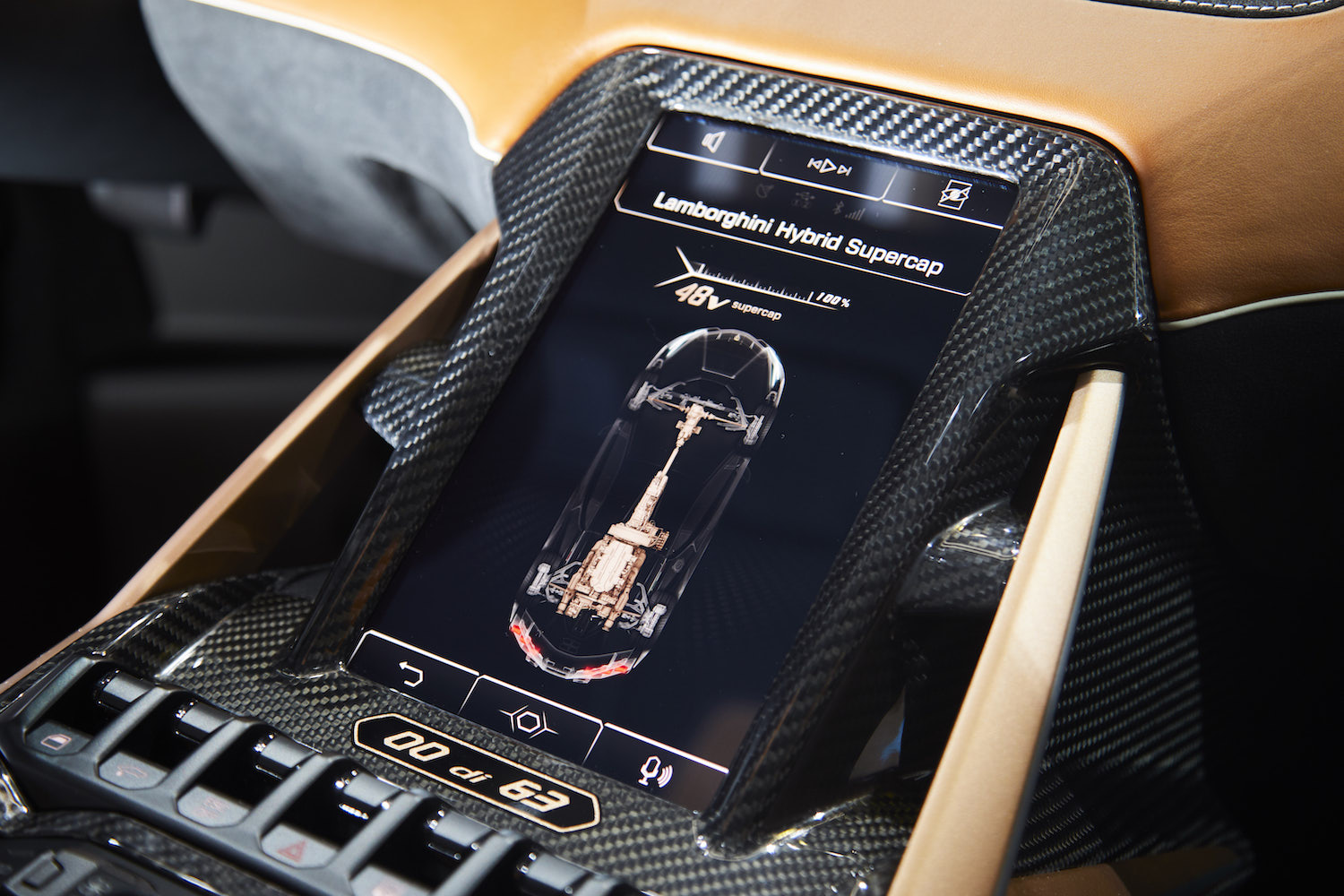Media | Articles
Next V-12 Lamborghini can’t have supercapacitor
Talking to Australia’s Car Sales at the Frankfurt Motor Show, Lamborghini’s chief technical officer Maurizio Reggiani said that in order to cut CO2 emissions, the next series-production V-12 Lamborghini will have to provide a minimal pure electric range—something a supercapacitor can’t guarantee at the moment. And that leaves Lamborghini with using batteries, just like everybody else.
Two years ago Lamborghini began teasing its hybridization program by creating an electric concept car called the Terzo Millennio, which used a supercapacitor instead of batteries to store energy. The Aventador also got a supercapacitor instead of lithium-ion packs for its starter battery. Then came this March and the Geneva Motor Show, when Reggiani suggested the Aventador’s successor could use the same technology: “We were the first to use a supercapacitor in Aventador for the starter battery, and we are convinced that for a super-sports car, this is one of the most suitable solutions. We need to maintain the emotions generated by the naturally aspirated V-12, and it’s clear that the performance gap needs to be filled with electrification.”
Supplementing the torque curve with electrification yields “much more consistent power delivery,” Reggiani continued, making performance that much more accessible and useable. He was adamant, however, that no one’s kicking Lambo’s V-12 anywhere near the curb: “I expect our V-12 to remain more or less like it is today, with increased power. I’m convinced that the V-12 still has a long life, even in the era of hybridization.”
With that in mind, at Frankfurt, Lamborghini revealed its most powerful model yet, the Sián, which since got renamed to Sián FKP 37 in honor of the late Ferdinand K. Piëch. Limited to 63 units, the Sián FKP 37 uses a 48-volt mild hybrid system with a 34-hp electric motor integrated into the gearbox, which supplements torque as well as send additional power directly to the wheels. And for energy storage, the Sián uses a supercapacitor instead of battery cells. Reggiani says that for the time being, though, only 63 customers will be able to enjoy the tech that provides 34 extra horses for a weight penalty of just 75 pounds.
Marketplace
Buy and sell classics with confidence

However, Lamborghini shows symptoms of a pricked environmental conscience. The Sián’s production run may total well below 100, but to “attack CO2,” Reggiani says, Lamborghini must focus on lowering emissions from models that represent a bigger chunk of production volume—such as the Aventador. “If you want to attack CO2, you need to have a battery that guarantees a certain range of full-electric mobility. With the supercapacitor as it is today, you cannot have this,” Reggiani says.
At this point, we know that the next big Lamborghini will have a dual-clutch transmission similar to the Huracán’s that’s likely to be heavier than the Aventador’s ISR semi-automatic single-clutch. We also know it will retain its huge 6.5-liter naturally-aspirated V-12, as well as four-wheel steering, another system adding to the mass. Jam some batteries into that already tight imaginary package, and you might end up fantasizing about the heaviest Lamborghini this side of an LM002.

Lamborghini’s answer to the V-12’s growing weight seems to be improved chassis control, especially the systems whose latest iteration comes in the Huracán Evo, says Reggiani—namely, rear-wheel steering and torque vectoring:
“Clearly, from a physics standpoint, weight is weight, mass is mass; but with body control, you can reduce the negative effects. For example, when we introduced rear-wheel steering on the Aventador S, the first impression of all the journalists was that the car was lighter. The car is not lighter, but it’s much more agile. In the end, if you added a kilo, that’s a kilo added, but we can offer better chassis control, electronics, and of course we’re also working hard on new technologies such as structural carbon fiber, in order to minimize the added weight of the hybridization.”
And all this trouble for what is suggested to be a pure electric range of 3–7 miles…













